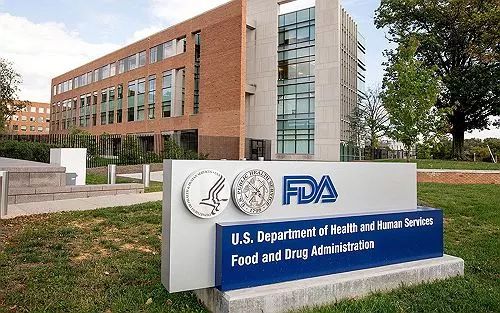
2019年4月11日,美国食品药品监督管理局(FDA)发布了一项最终规则,旨在帮助确保OTC洗手液的安全性和有效性。该规则规定,某些活性成分不得用于OTC洗手液(OTC洗手液被正式称为供消费者使用的外用涂擦免洗型抗菌产品,预期在没有水的情况下使用,是根据美国FDA的OTC药品审查批准上市的)。该最终规则还力求确保FDA对供消费者使用的涂擦免洗型抗菌产品的活性成分的安全性和有效性评估和决定是一致的、最新的,并适当反映当前的科学知识和不断增加的使用方式。
美国FDA药品评价与研究中心(CDER)主任Janet Woodcock表示,“该最终规则的发布旨在帮助消费者相信,在无法用水用肥皂洗手的情况下,他们使用的OTC洗手液是安全有效的。通过该最终规则,我们最终确定了FDA先前的决定,即28种活性成分(包括三氯生和苄索氯铵)不得在美国FDA的OTC药品审查中用于供消费者使用的涂擦免洗型抗菌产品。此外,我们重申,我们需要更多关于其他三种活性成分(包括乙醇,洗手液中最常用的成分)的数据,以帮助FDA确保这些产品对于消费者的日常使用是安全有效的。我们相信业界在提供数据方面已经取得了良好进展,我们将继续向公众提供收集这些数据的最新进展。”
在没有普通肥皂和水的情况下,使用涂擦免洗型抗菌洗手液是一种方便的选择。数百万美国人每天使用涂擦免洗型抗菌洗手液,有时一天使用多次,以帮助减少手上的细菌。美国疾病控制与预防中心(CDC)表示,用普通的肥皂和自来水清洁仍然是避免生病和预防传染病传播的最重要的步骤之一。如果没有肥皂和水,CDC建议使用酒精含量60%以上的免洗型抗菌洗手液。
在2016年6月30日发布的有关供消费者使用的涂擦免洗型抗菌产品的拟议规则中,美国FDA要求提供更多的科学数据,以支持供消费者使用的OTC涂擦免洗型抗菌产品中使用的活性成分的安全性和有效性。
此次最终规则的发布,FDA推迟了三种活性成分(苯扎氯铵、乙醇和异丙醇)的进一步规则的制定,因为正在进行的研究需要更多的安全性和有效性的数据,用于确定供消费者使用的OTC涂擦免洗型抗菌产品中使用这些活性成分是否属于公认安全且有效(GRAS/GRAE)。这三种活性成分的结果将在研究完成和分析后发布,如果研究未完成,则在另一时间发布。目前,FDA并不打算采取行动从市场上移除含有这三种活性成分的洗手液。
不到3%的市场会受到该最终规则的影响,因为大多数供消费者使用的OTC涂擦免洗型抗菌产品使用乙醇作为活性成分。
FDA意识到零售商和药店仍在销售极少量的含有苄索氯铵的洗手液,但他们已经停止销售含有三氯生的洗手液。含有任何不符合条件的活性成分的药品,需要通过新药申请或简化新药申请获得批准后方能上市销售。
该最终规则完成了FDA正在进行的OTC抗菌活性成分审查中的一系列规则制定行为,以确定这些成分按其预期用途使用时是否安全有效。FDA此前发布了关于供消费者使用的水洗型抗菌产品的最终规定(2016年9月)和供医护专业人员使用的抗菌消毒产品的最终规定(2017年12月)。
FDA issues final rule on safety and effectiveness of consumer hand sanitizers
The U.S. Food and Drug Administration today issued a final rule designed to help ensure that hand sanitizers available over-the-counter (OTC) are safe and effective for those who rely on them. The rule establishes that certain active ingredients are not allowed to be used in OTC hand sanitizers, formally known as topical consumer antiseptic rub products, which are intended for use without water, that are marketed under the FDA’s OTC Drug Review. The final rule also seeks to ensure that the agency’s safety and effectiveness evaluations and determinations for consumer antiseptic rub active ingredients are consistent, up-to-date and appropriately reflect current scientific knowledge and increasing use patterns.
“Our action today aims to help provide consumers with confidence that the over-the-counter hand sanitizers they’re using are safe and effective when they don’t have access to water to wash with soap,” said Janet Woodcock, M.D., director of the FDA’s Center for Drug Evaluation and Research. “In today’s final regulation we finalized the FDA’s previous determination that 28 active ingredients, including triclosan and benzethonium chloride, are not eligible for evaluation under the FDA’s OTC Drug Review for use in consumer antiseptic rubs. We’ve also reaffirmed our need for more data on three other active ingredients, including ethyl alcohol, which is the most commonly used ingredient in hand sanitizers, to help the agency ensure that these products are safe and effective for regular use by consumers. We believe industry has made good progress toward providing data and we will continue to provide updates to the public about the progress of collecting this data.”
Consumer antiseptic hand sanitizers provide a convenient alternative when hand washing with plain soap and water is unavailable. Millions of Americans use antiseptic rubs daily, sometimes multiple times a day, to help reduce bacteria on their hands. The Centers for Disease Control and Prevention advises that washing hands with plain soap and running water is one of the most important steps consumers can take to avoid getting sick and to prevent spreading infections to others. If soap and water are not available, the CDC recommends using an alcohol-based hand sanitizer that contains at least 60 percent alcohol.
As part of the June 30, 2016 proposed rule on consumer antiseptic rubs, the FDA requested additional scientific data to support the safety and effectiveness of active ingredients used in OTC consumer antiseptic rubs.
At this time, three active ingredients—benzalkonium chloride, ethyl alcohol, and isopropyl alcohol—are being deferred from further rulemaking to allow for the ongoing study and submission of additional safety and effectiveness data necessary to make a determination regarding whether these active ingredients are generally recognized as safe and effective for use in OTC consumer antiseptic rub products. Their status will be addressed either after completion and analysis of the studies or at another time, if these studies are not completed. At this time, the FDA does not intend to take action to remove hand sanitizers containing these three active ingredients from the market.
Less than 3% of the marketplace will be affected by the issuance of this final rule, as most OTC consumer antiseptic rubs use ethyl alcohol as the active ingredient.
The FDA is aware that retailers and pharmacies continue to market a very low number of consumer hand sanitizers containing benzethonium chloride, but that they stopped marketing hand sanitizers containing triclosan. Drug products containing any ineligible active ingredients will require approval under a new drug application or abbreviated new drug application prior to marketing.
This final rule completes a series of rulemaking actions in the FDA’s ongoing review of OTC antiseptic active ingredients to determine whether these ingredients are safe and effective for their intended uses. The FDA previously issued final rules on consumer antiseptic washes (Sept. 2016) and health care antiseptics (Dec. 2017).
来源:FDA
原文链接:https://www.fda.gov/NewsEvents/Newsroom/PressAnnouncements/ucm635793.htm
整理翻译:奥咨达
奥咨达翻译团队根植于中国,面向全球,专注为医疗器械领域的企业提供专业、高效的翻译解决方案。翻译领域包括医疗器械的研发、注册、临床、上市后监督、营销、管理、培训等,译稿已涵盖医疗器械领域的所有类型。 奥咨达翻译组联系方式: 邮箱:trans@osmundacn.com
准备好开始了吗?
那就与我们取得联系吧
有一个医疗器械项目想和我们谈谈吗?您可以填写右边的表格,让我们了解您的项目需求,这是一个良好的开始,我们将会尽快与你取得联系。当然也欢迎您给我们写信或是打电话,让我们听到你的声音!
24小时免费咨询热线:
400-6768632